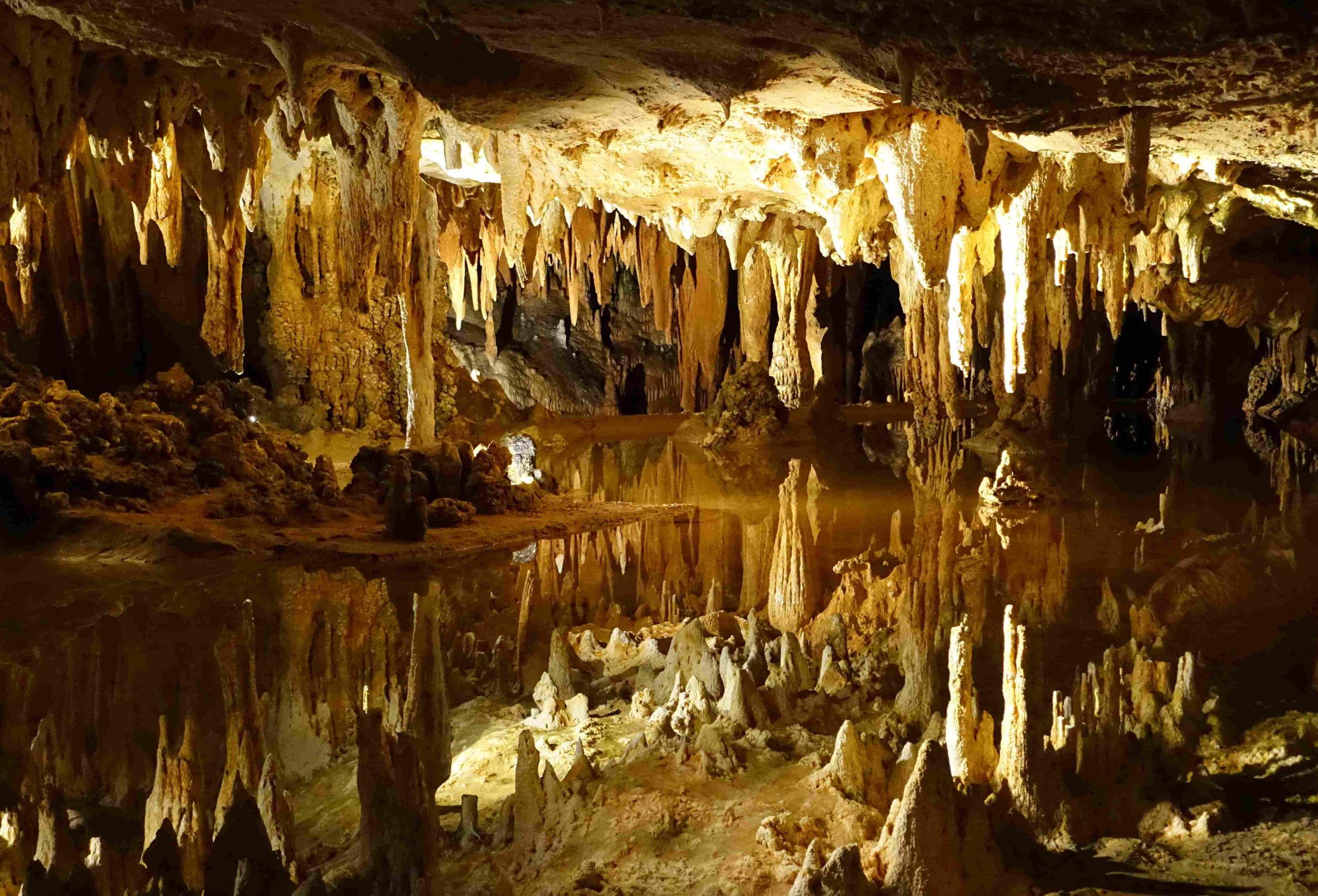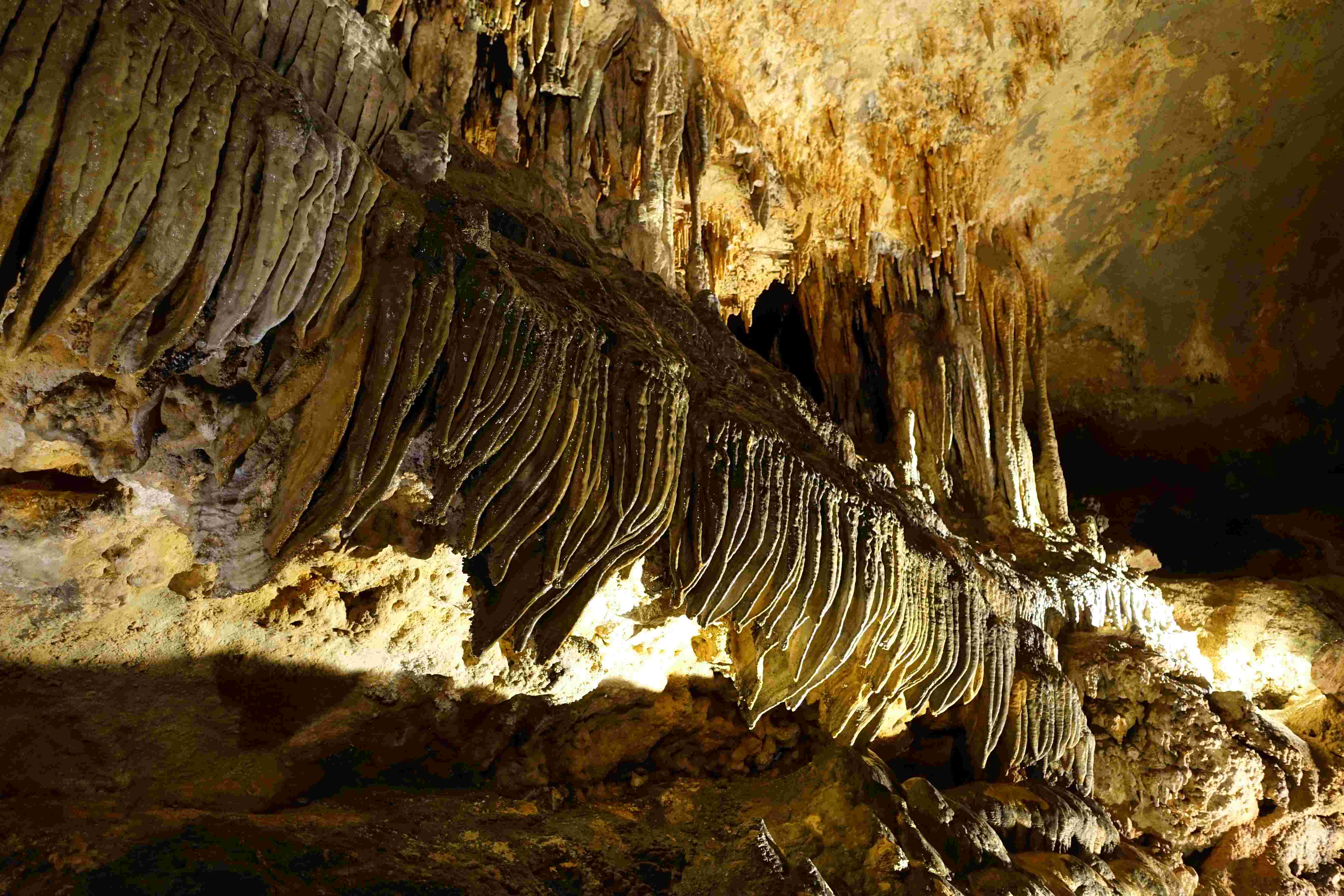Luray Caverns, located in Virginia’s Shenandoah Valley, is renowned for its stunning underground formations and unique water features. The caverns’ water, characterized by its purity and mineral content, plays a crucial role in shaping the cave’s intricate structures. With a constant temperature of 54°F (12°C), the water in Luray Caverns contains carbonate of lime and trace minerals, contributing to the formation of stalactites, stalagmites, and other speleothems. This article delves into the fascinating world of Luray Caverns water, exploring its composition, characteristics, and the role it plays in this natural wonder.
What is the Composition of Luray Caverns Water?

The water in Luray Caverns is a complex mixture of minerals and compounds that contribute to its unique properties:
- Carbonate of Lime: This is the primary mineral component, essential for the formation of cave structures.
- Trace Minerals:
- Iron
- Manganese
- Copper compounds
These trace minerals are responsible for the vibrant colors seen in the cave formations:
| Mineral | Color Produced |
|---|---|
| Iron | Reds, Yellows |
| Manganese | Blacks |
| Copper | Blues, Greens |
- Carbonic Acid: The water is mildly acidic due to the presence of carbonic acid, formed when rainwater absorbs carbon dioxide as it percolates through soil and vegetation above the caverns.
How Does the Water Temperature Affect the Caverns?

The consistent water temperature in Luray Caverns plays a significant role in the cave’s ecosystem and formation process:
- Constant Temperature: The water maintains a steady 54°F (12°C) throughout the year.
- Impact on Formation: This constant temperature contributes to the slow but steady growth of cave formations.
- Ecosystem Support: The stable temperature creates a unique environment for cave-dwelling organisms.
What Are the Notable Water Features in Luray Caverns?
Luray Caverns boasts several impressive water features that captivate visitors:
- Underground Lakes:
- Some basins reach up to 50 feet (15 meters) in diameter.
- Depths can extend to 15 feet (5 meters).
-
Broaddus Lake is a prominent example, known for its size and beauty.
-
Unique Pools:
- A notable pool, 12 feet (4 meters) wide, features a crystallized calcite surface resembling ice.
-
This calcite film is a testament to the mineral-rich water of the caverns.
-
Unusual Formations:
- “Pearls, eggs, and snowballs” – concretions formed by the carbonate-rich water.
- These formations showcase the diverse ways in which the water interacts with the cave environment.
How Do Water Tours Operate in Luray Caverns?
While Luray Caverns doesn’t offer specific water-focused tours, the standard cave tour includes several water-related highlights:
- Tour Duration: Approximately 1 hour
- Distance Covered: About 1.25 miles of the caverns
- Frequency: Regular tours throughout the day (schedule varies by season)
- Key Features:
- Viewing of water-filled basins and lakes
- Explanation of water’s role in speleothem formation
- Insights into the geological processes shaping the caverns over millions of years
For the most current tour information and pricing, it’s advisable to check the official Luray Caverns website.
What Accessibility Options Are Available for Water Features?
Luray Caverns strives to make its water features and overall cave system accessible to all visitors:
- Wheelchair Accessibility:
- Most areas of the cave are wheelchair accessible.
-
Some sections may present challenges due to natural terrain.
-
Facilities:
- Elevators and ramps are available to aid access.
-
Ample parking facilities near the caverns’ entrance.
-
Special Considerations:
- Visitors with mobility issues are encouraged to contact the caverns in advance.
- Staff can provide additional assistance or information about accessible routes.
What Rules Should Visitors Follow Regarding Water Features?
To preserve the delicate cave environment and its water features, visitors must adhere to specific guidelines:
- Stay on designated paths at all times.
- Do not touch any formations or water features.
- Littering is strictly prohibited.
- No smoking allowed inside the caverns.
- Food and drinks are not permitted during the tour.
These rules help maintain the pristine condition of the caverns and ensure that future generations can enjoy this natural wonder.
How Does Luray Caverns Water Contribute to Cave Formation?
The water in Luray Caverns is the primary architect of its stunning formations:
- Dissolution Process:
- Carbonic acid in the water slowly dissolves the limestone bedrock.
-
This process creates voids and passages over millions of years.
-
Deposition:
- As water drips or flows, it deposits dissolved minerals.
-
This gradual deposition forms stalactites, stalagmites, and other speleothems.
-
Coloration:
- Trace minerals in the water contribute to the varied colors of formations.
-
Iron oxides create reds and yellows, while copper compounds produce blues and greens.
-
Continuous Growth:
- The constant flow of mineral-rich water ensures ongoing formation growth.
- Some formations in Luray Caverns grow at a rate of about 1 cubic inch per 120 years.
What Makes Luray Caverns Water Unique Compared to Other Cave Systems?
Luray Caverns water possesses several distinctive characteristics:
- Mineral Composition:
- The specific blend of minerals in Luray’s water creates unique formation patterns.
-
The presence of certain trace elements results in vibrant and diverse colorations.
-
pH Levels:
- The mildly acidic nature of the water contributes to both cave formation and preservation.
-
This acidity is balanced enough to dissolve rock slowly without damaging existing formations.
-
Temperature Stability:
- The constant 54°F (12°C) temperature of the water plays a crucial role in the caverns’ ecosystem.
-
This stability allows for consistent formation growth and supports unique cave-dwelling organisms.
-
Clarity:
- The water in Luray Caverns is known for its exceptional clarity.
-
This clarity allows visitors to see deep into pools and lakes, enhancing the visual experience.
-
Formation of Unique Features:
- The specific conditions of Luray’s water have created rare formations like the calcite-covered pool.
- These features are not commonly found in other cave systems.
By understanding the unique properties of Luray Caverns water, we gain a deeper appreciation for the complex processes that have shaped this underground wonder over millions of years. The interplay between water, minerals, and time has created a subterranean landscape that continues to captivate and educate visitors from around the world.

